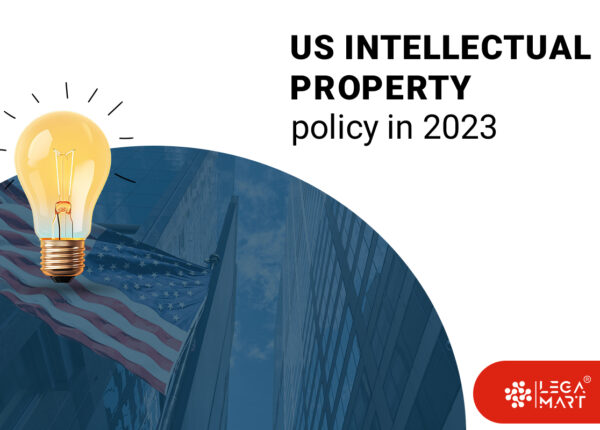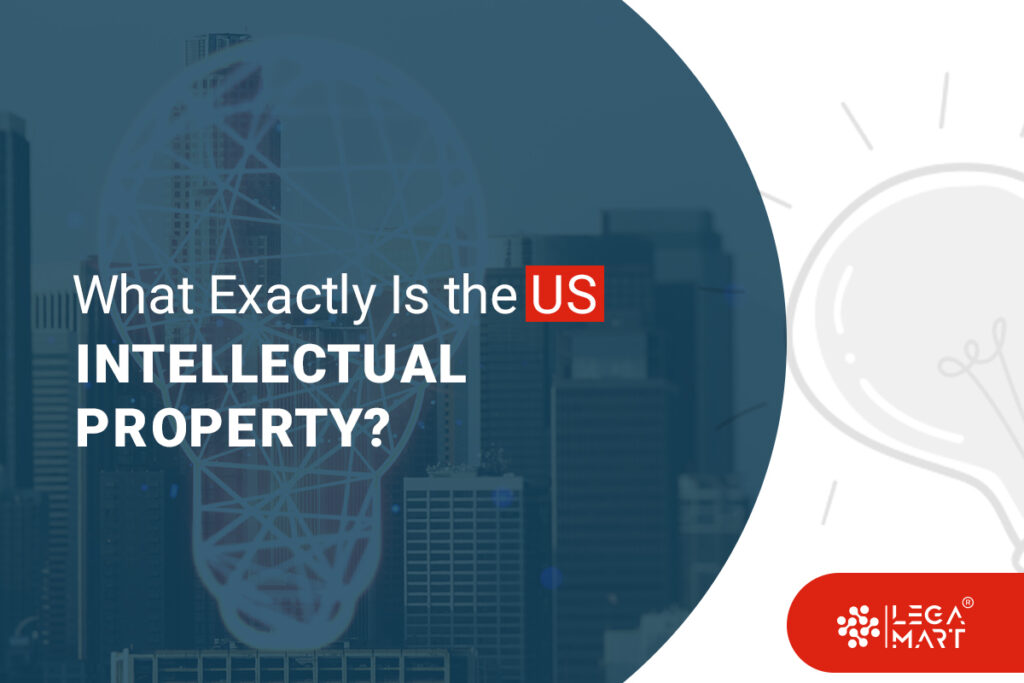US Intellectual Property
Intellectual property includes any creation of the human intellect protected against unauthorised use by others. By its very nature, intellectual property is protected by a limited monopoly.
Different Types of IP Protection in the US
A piece of intellectual property is a creation of the human mind, which could be anything from an invention to a work of art. Individuals and companies seek legal protection for these ideas to prevent unauthorised usage.
You should require every team member to sign an intellectual property contract if you are a company. Ensure you display copyright usage restrictions on all protected products when your company has an active customer base. At the very least, print notices on supporting documents if this isn’t possible. The next step is to discuss the four types of intellectual property protection the US law offers.
Copyright
The expression of an idea is the basic idea that needs protection. Document every stage of the creation process if you want to protect your intellectual property; it should be noted that copyright does not extend to the underlying ideas or concepts.
Trademark
Trademarks are identifiers of a company or a brand. The most common elements are logos and words, but other forms exist as well, such as sonic branding (music and idents).
Patent
An intellectual property patent protects an idea as long as it is original (novel), practical, and not obvious. Patent holders enjoy exclusive rights for up to twenty years. Upon expiration, the idea becomes public domain.
Trade Secret
A trade secret cannot be registered with the government, but it still has intellectual property protection. The procedural systems and formulas that contribute to competitive advantage are included here.
Intellectual property provisions and conventions in the USA
Article 1 Section 8, Clause 8 of the US constitution allows IP laws for copyright and patents i.e congress is given powers to give authors and inventors exclusive rights in their writings and inventions for a limited period of time. Patents are governed by the Patent Act and administered by the US Patent and Trademark Office (USPTO), while Copyright Act governs copyright. Trademarks, on the other hand are governed by Lanham Act, and USPTO equally administers the same. Furthermore, trade secrets are protected under Uniform Trade Secrets Act (UTSA) and common law.
Additionally, many international treaties have set some standards for Intellectual Property protection worldwide, most countries have ratified some of the treaties, and the USA is no exception. The following are IP agreements that the USA has ratified:
The Paris Convention – This convention applies to IP protection in the widest sense, covering diverse IP rights such as patents, trademarks, unfair competition, industrial design, geographical indication etc. Once a country ratifies this treaty, any person from the said country can apply for IP protection in any other signatory state. The said IP protection would be accorded the same enforcement rights and status as a national of that country.
The Berne Convention – This convention protects literacy and artistic work. The convention provides for automatic protection to members of signatory countries such that each member state recognises the published works of persons from other member states as the works of their nationals.
The Madrid Protocol – This protocol is a central system used by member states to obtain trademark protection through the worldwide registration of trademarks from other member states through a single application. This international agreement provides a streamlined process for securing global trademark rights, including the ability to Trademark a Logo in the UK, by filing a single application that covers multiple jurisdictions.
The Patent Cooperation Treaty – this treaty works as the Madrid Protocol. However, its application is for patent applications.
No matter who you are, our services provide a fast, efficient, and cost-effective way to protect your inventions, trademarks, or designs. Contact us to hire a lawyer.
How Can You Protect Your Intellectual Property?

Following essential steps will help protect your business’s valuable content, products, and ideas. These steps should reduce your chances of dealing with intellectual property theft. They also give you protection in case someone does steal your IP.
Keep business ideas and trade secrets confidential
Do not discuss your intellectual property with others until you have adequately secured it unless they have signed a non-disclosure agreement. It’s essential to be careful who you allow access to this information and not promote your idea in a public forum. Consult an attorney if you’re working with partners, and sign tailored nondisclosure agreements.
Document your original concepts and content in detail
Document your intellectual property with drawings, descriptions, plans, and records that prove you came up with it and have worked on it. A copyright and trademark proof will be helpful if someone challenges your rightful ownership of the trademarks and copyrights. You should include dates wherever possible since the first use date is crucial to IP matters.
Apply for a Trademark
Your business name and logo should be registered with the USPTO office.
Register all your intellectual property, trade secrets, and creative works
Together with your trademarks, you should also register the rest of your assets with your IP attorney. Ensure that you write down all the details of your intellectual property, so you can register it and distinguish it from similar ideas already in existence. It’s a good idea to consider conducting an IP audit with your attorney so your IP portfolio is formalised.
Invest in your business
Before officially protecting your intellectual property, anyone can steal your idea and create it independently. Still, if you protect your intellectual property, you will likely beat content and idea thieves.
Why should you protect your IP?
There are many advantages to securing your intellectual property rights.
Enhance your company’s market value
Your business can generate income from licensing, selling, or commercialising protected products or services. This can increase market share or profit margins. Registered and protected IP assets can increase the value of your business during a merger, sale, or acquisition.
Create profit-making assets from ideas
On their own, ideas are of little value. Intellectual property can, however, help you to turn ideas into products and services that are commercially successful. If you license your patents or copyright, for example, you can receive a steady stream of royalties and additional income, which can boost your business’sbusiness’s bottom line.
Market your business’ products and services
IP is crucial for establishing an image for your business. Trademarks, logos, or the design of your products are examples. You can use IP to differentiate your products and services in the market.
Obtain or raise financing for your business
Your IP assets can be sold, licensed, or used as collateral for debt financing. Moreover, if you need government or public funding, such as grants, subsidies, or loans, you can use your IP to your advantage.
US Intellectual property policy in 2023

Technology is advancing rapidly, and this to the US means more developments in IP laws and more challenging IP cases in 2023 regarding issues such as Artificial Intelligent (AI), Blockchain and Non-Fungible Tokens (NFTs), and the court awarded damages being successfully challenged. With all these challenges, high demand for new IP laws will be in place in 2023.
- Artificial Intelligence (AI). Pertinent issues are being raised in the use of AI, particularly on the issue of ownership of inventions. The decisions by the USPTO and USCO clearly provide that only a human may be an inventor. Similarly, in obtaining a copyright, human involvement is required. However, having these considerations, the role of AI in advancing the creative process becomes questionable. Therefore, in 2023, more cases challenging the human use of AI in the creative process before the USPTO and USCO will emerge.
- Blockchains and NFTs. It is still unclear on NFTs containing third-party IP and the rights that transfer with an NFT sale. More cases have been determined on the issues before, including Nike, Inc. v. StockX LLC, 1:22-cv-00983 (SDNY Feb, 3, 2022). In this case, Nike alleged trademark infringement to its registered marks that were used in NFTs that were sold by StockX. The said NFTs are used as part of an effort to authenticate resold shoes.
- Another issue to be explored in 2023 is the extent to which IP rights are enforced and exploited in the metaverse. If the answer is affirmative, an aggrieved party can enforce such rights and where.
- Substantial awards granted to patent cases are successfully being challenged, for example, in Roche Diagnostics Corp. v. Meso Scale Diagnostics, LLC, 30 F.4th 1109 (Fed. Cir. 2022). The Federal Circuit vacated an award of $137 million damage on the ground that the apportionment was possibly considered based on remand. Similarly, in Inst. of Tech. v. Broadcom Ltd., 25 F.4th 976 (Fed. Cir. 2022). A jury award of $1.1 billion on grounds of an unsupported two-tier reasonable royalty model and lack of apportionment was vacated by the Federal Circuit.
- There are also controversies on issues relating to patent eligibility, with some cases still ongoing under the US High Court. For example, in Tropp v. Travel Sentry, Inc., 2022 U.S. App. LEXIS 3906 (Fed. Cir. Feb. 14, 2022), petition for cert. Filed, 2022 US S. Ct. Briefs LEXIS 2127 (US July 5, 2022) (No. 22-22). A petition for certiorari raised issues of claims covering TSA master-key compliant locks that are applied for travel that declaims physical steps, rather than computer-processing steps, are patent-eligible under 35 USC § 101.
Intellectual property infringement
IP infringement refers to a violation of intellectual property, such as using a third-party Intellectual Property without appropriate permission from the owner. Examples of various types of IP infringement can be: –
Patent Infringement. This can occur when an infringer makes, sells or uses an already patented product or design without obtaining permission from the owner.
Copyright infringement. Copyright infringement can arise when a copyrighted photograph or image is copied or uploaded or used in other creative activities without the owner’s permission. One prevalent method of copyright infringement on social media involves the unauthorized sharing or reproduction of copyrighted material.
Trademark Infringement. This may occur when a trademark is used to confuse consumers with an already registered or well-known trademark. Similarly, counterfeiting can be considered as an IP infringement under trademark and can occur where the infringers ‘infringes’ products are fake or a replica of the real products hence deceiving consumers and making it difficult for them to differentiate the origin of the products offered.
Who We Are?
Due to our domain expertise and IP lawyers/consultants on staff, LegaMart can handle diverse intellectual property issues. Increasingly, technology undercuts the ability of many firms and businesses to protect their confidential information, uniqueness, and creative output. We use our expertise and knowledge to provide you with the best protection for your business and intellectual property.
If you have any IP-related queries, please feel free to contact our intellectual property consultants for prompt assistance and solutions.
What is the process for obtaining IP protection in the US?
How can you enforce your IP rights if someone infringes on them?
Common myths about intellectual property law in the US. LegaMart accompanies you to answer all your legal questions and solve problems regarding law issues. Articles regarding intellectual property in different countries, prepared by LegaMart, are also available here.
Uncover the steps and procedures for immigration to different nations, with a focus on Turkey to Norway and US to Portugal, in Legamart’s insightful articles.





